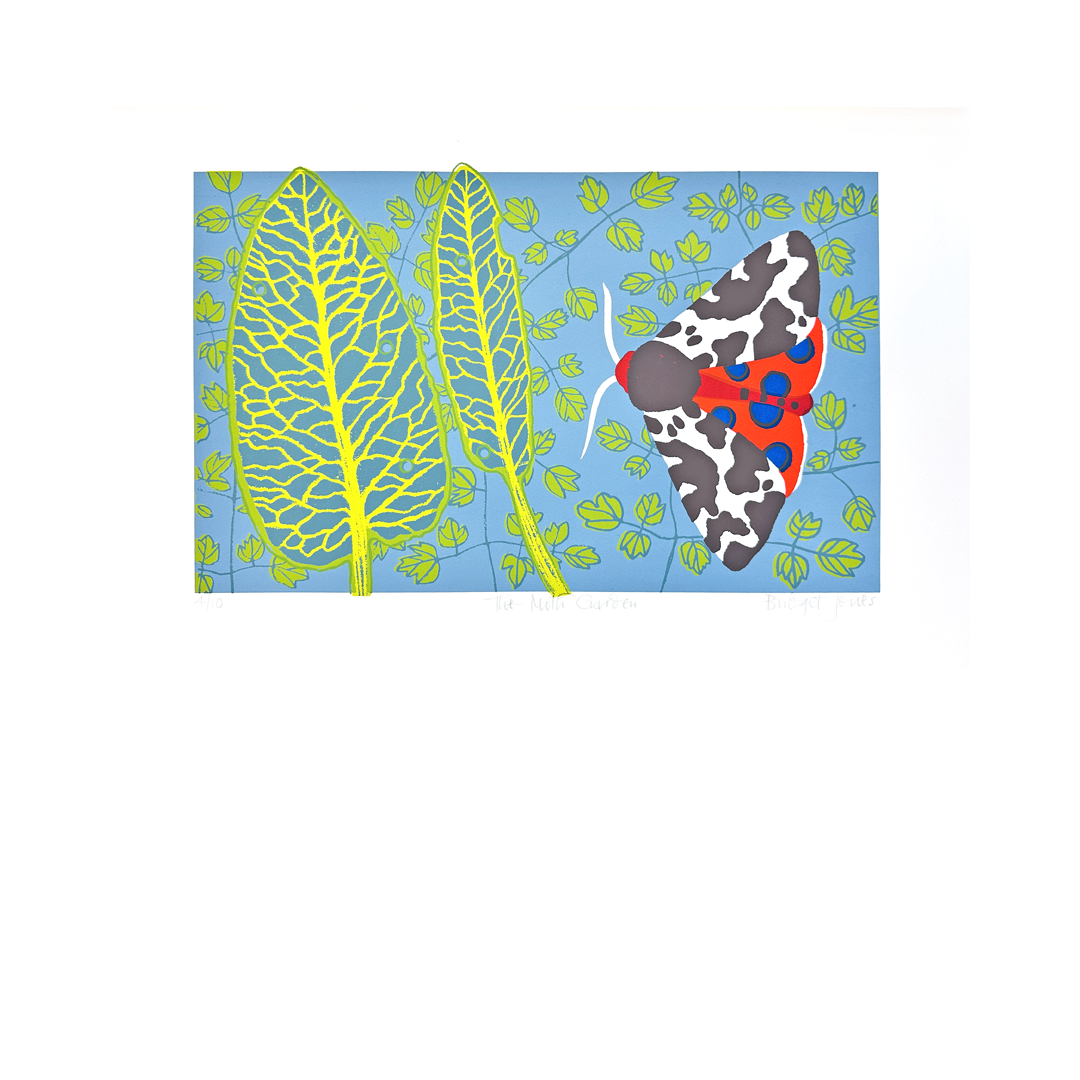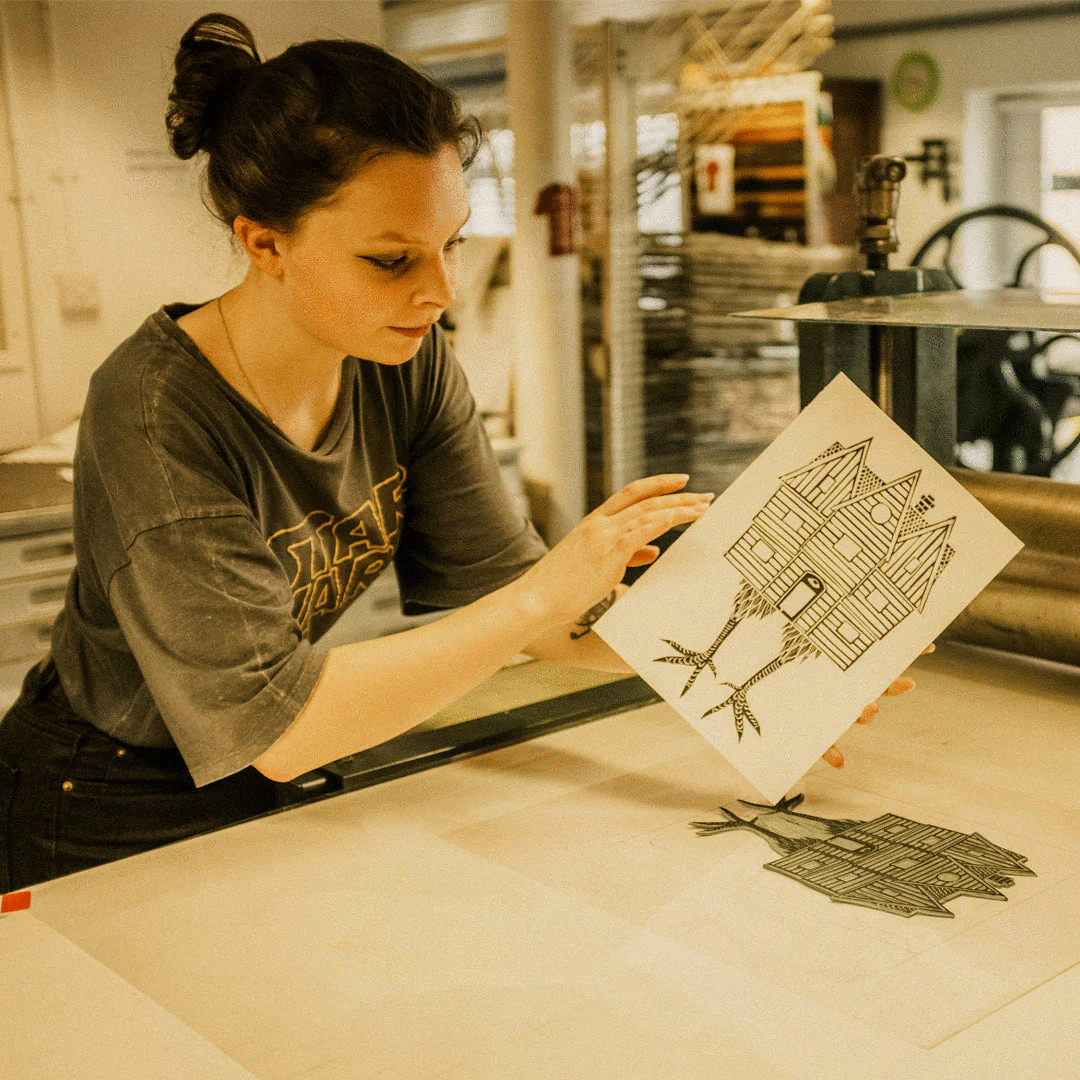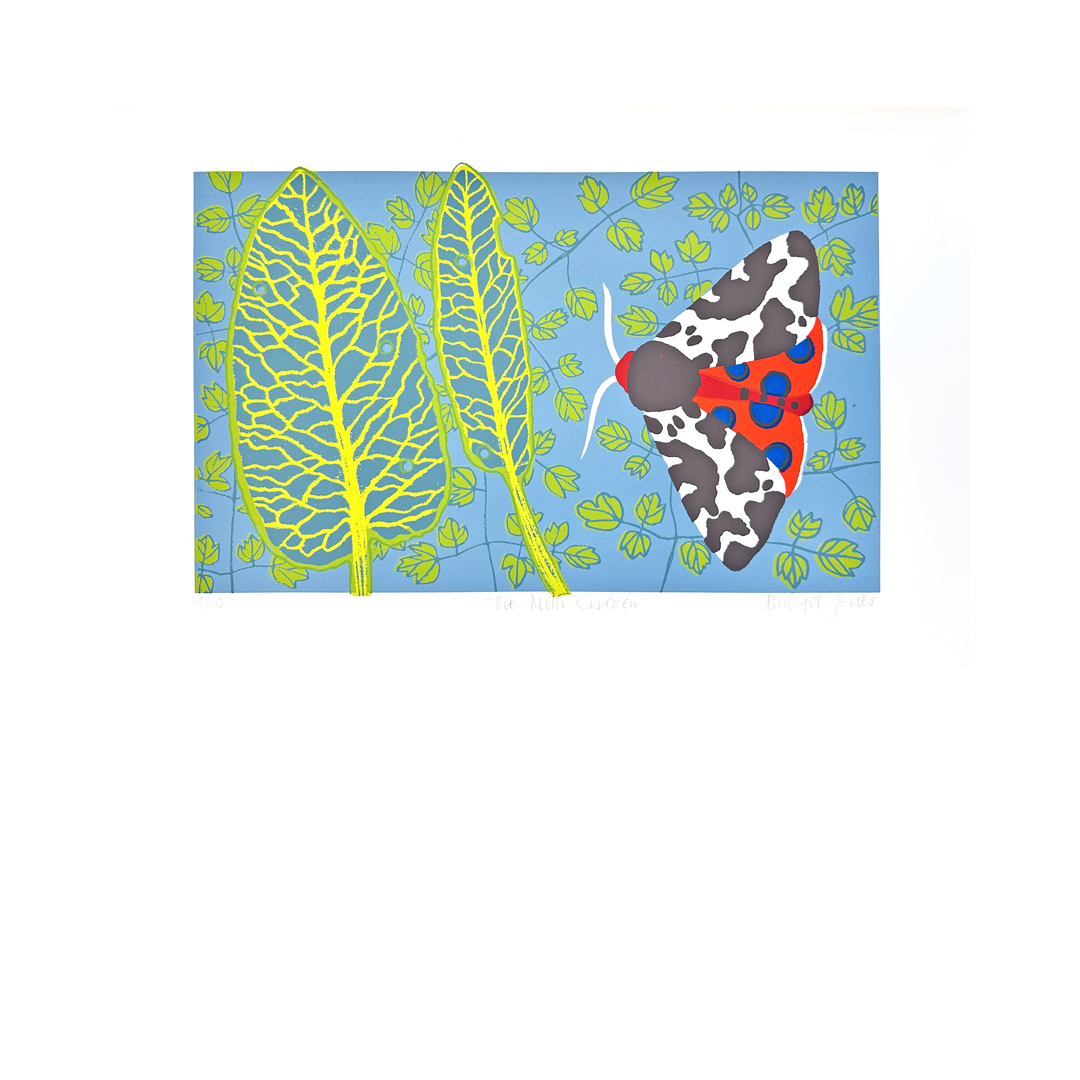The Moth Garden
The Moth Garden
Artist: Bridget Jones
Medium: Screenprint
Dimensions: Paper size: 52 x 38cm / Image size: 40 x 25cm
Edition: Edition of 10
Postage & Packing
Postage & Packing
£9 UK postage & packing in secure postal tube.
By selecting this option, you confirm that you want to apply Gift Aid.
Couldn't load pickup availability
Share

Information
-
About this print
There are over 2500 larger moth species in the UK.
Moths are in decline, with over 62 becoming extinct in the 20th century, and many others are on the official Red List. Many others haven’t made that list but are still vulnerable. Moths are the canary in the coalmine for the state of our natural environment.
Moths are so important in food chains, and so their decline is not good news for the many kinds of bats, birds and other animals that rely on the adults, the larvae and the pupae. Blue Tit chicks alone are estimated to eat 150,000,000,000,000 caterpillars in Britain each year.
Moths are very important as pollinators alongside bees.
Moths have a bad press, because the first thing people think of is those moth larvae that chew holes in our woollies. However, there are so many beautiful and fascinating species of moth with fabulous names. There are lovely, historical drawings of moths, many shown alongside their food plants – their habitat. Collecting moths was a social, even a fashionable, pursuit as far back as the early 1700s and many of the common names are still in use today. Today, there is a UK wide network of naturalists – many amateur - with light traps, trapping, identifying, and recording moths, in a wide range of habitats, before releasing them.
There may be several reasons for their decline. Lack of dark skies, spraying of ‘weedy areas’ with insecticide, use of pesticides, loss of grass to plastic grass and concrete, and climate change.
My print will be an imaginary twilight garden with the Garden Tiger moth, a beautiful moth with graphic black and white upper and brilliant orange-red underwings with blue spots. The plants will be some of the food plants of this moth needs for its life-cycle.
They are seen in gardens and were once common but are now under threat. The Tiger Moth will be the gorgeous representative of the many, many larger moth species that are in rapid decline.
In the last few years, I have re-created a tiny species-rich meadow in the garden and tried to include lots of pollinator-friendly plants in the border. A friend brought her light trap round in Autumn, and it was a thrill to find 20 moths, from 12 different species. I was hooked.
So, this is possibly both a moth bestiary with a moral, and a herbal created of pressed flowers, drawings and photographs from my garden, but also referencing historical prints from old herbals. It is an attempt to show how crucially interdependent plants and animals are. That includes us humans.
I have used a linocut technique to recreate the sort of wallpapers and fabrics that the early enthusiasts might have known. -
Endless Forms, Most Beautiful
Read MoreA new bestiary and herbarium for at risk species by artists from Northern Print.
“Endless Forms Most Beautiful” is made possible with The National Lottery Heritage Fund. Thanks to National Lottery players, we have been able to support visits, new printmaking and school’s programme for this project.
Northern Print artists bring together traditional printmaking and the natural world with a series of new prints highlighting the diversity of species that are categorised as ‘at risk’.
The ‘endless forms’ include marine life; plants; birds; insects and mammals with many familiar and much-loved species as well as less known and intriguing creatures that have captured the imagination and hearts of Northern Print’s artists.
This exhibition of 45 new prints has been made following a series of visits to our region’s natural history collections and habitats and represents the tiniest tip of the iceberg of our natural world under threat.
The artwork includes a range of approaches and printmaking processes – including heritage craft skills also deemed at risk including letterpress and mould-made papers



